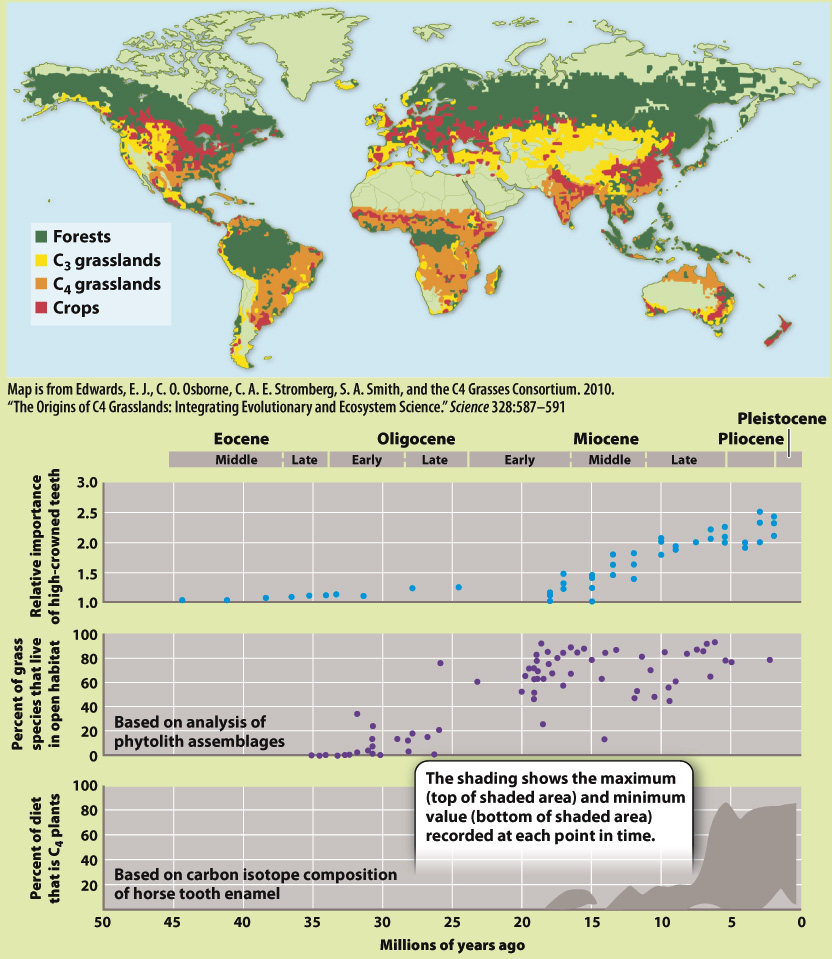HOW DO WE KNOW?
FIG. 33.22
When did grasslands expand over the land surface?
BACKGROUND Today, prairies, steppes, and other grasslands occur widely in the interiors of continents. Grasses, however, do not fossilize readily. How, then, can we understand how grasslands developed through time?
HYPOTHESIS Grasslands expanded as climate changed over the past 50 million years.
OBSERVATIONS AND EXPERIMENTS Grasses commonly make phytoliths, small structures of silica (SiO2) in their cells. These preserve well, providing a direct record of grass expansion. Moreover, mammals that feed on grasses evolved high-
RESULTS Studies of phytoliths, mammal tooth structure, and carbon isotopic composition of teeth enamel from the North American midcontinent clearly show that grasslands expanded 20 to 15 million years ago, and C4 grasslands expanded later, about 8 to 6 million years ago.

CONCLUSION In North America, grasslands expanded as atmospheric CO2 levels declined and climates became drier. Other continents show evidence of a similar linkage of grassland expansion to climate change.
FOLLOW-
SOURCE Stömberg, C. A. E. 2011. “Evolution of Grasses and Grassland Ecosystems.” Annual Review of Earth and Planetary Sciences 39: 517–